Microphones Guide
Type of microphone
Some popular types include dynamic microphones, condenser microphones, and ribbon microphones. Dynamic microphones, such as the Shure SM58, are durable and versatile, making them suitable for live performances and recording vocals or instruments on stage. They offer good off-axis rejection and can handle high sound pressure levels. Condenser microphones, like the Audio-Technica AT2020, are known for their sensitivity and accuracy and are often used in studio settings for capturing vocals and acoustic instruments with fine detail. They require power in the form of 48v phantom power and are typically more delicate than dynamic microphones. Ribbon microphones, such as the AEA R84, provide a smooth and warm sound and are appropriate for studio recordings, especially for capturing instruments like guitar amps, horns, and strings with a vintage tone. They may require a preamp with sufficient gain due to their low output level.

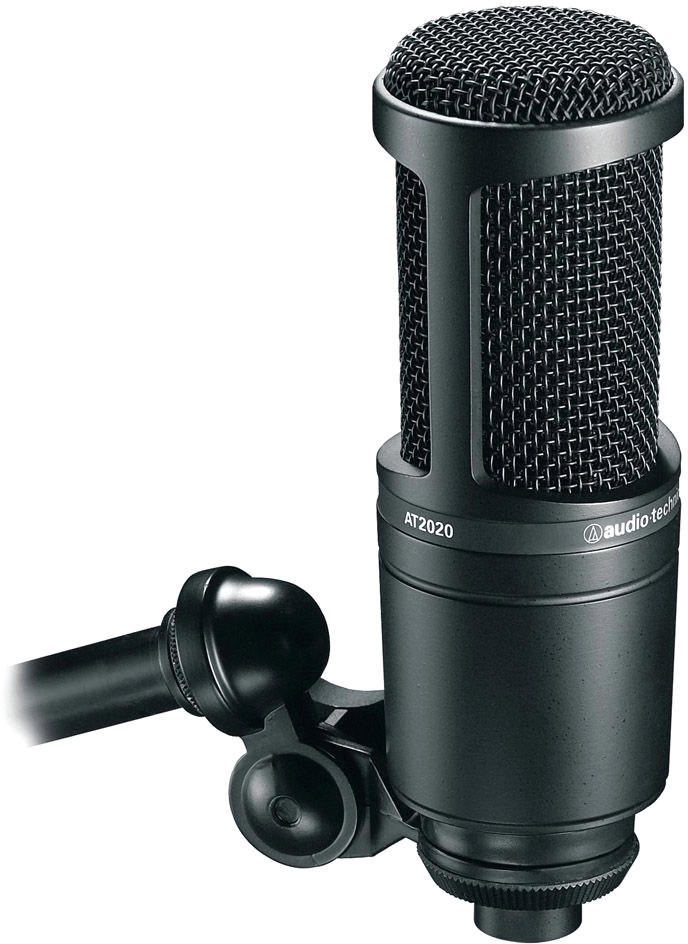
Polar pattern
The polar pattern determines the microphone's sensitivity to sound coming from different directions. There are several types of polar patterns, each with its own characteristics. The most common polar patterns include cardioid, omnidirectional, and figure-eight.
For example, cardioid microphones such as the Shure SM58 are particularly useful for capturing sound directly in front of the mic while rejecting sound from the sides and rear. This makes them ideal for live performances and recording vocals in a studio. On the other hand, omnidirectional microphones like the Audio-Technica AT2035 capture sound from all directions equally, making them suitable for recording ambient sound or for situations where a more natural and spacious audio quality is desired. Lastly, figure-eight microphones, like the AKG C414 XLII, have a "figure eight" pattern which captures sound from the front and the rear but rejects sound from the sides. These types of microphones are commonly used for mid/side recording techniques and capturing two sources facing each other.

Understanding the polar pattern of a microphone is essential as it will determine how effectively it captures sound from a specific direction, allowing you to choose the best microphone suited to your specific recording needs.
Frequency response
The frequency response refers to the range of frequencies that the microphone is able to accurately reproduce, and it is typically measured in hertz (Hz). A wider frequency response will result in a microphone that can capture a broader range of audio frequencies, making it suitable for a variety of applications such as recording vocals or capturing musical instruments. For instance, the Shure SM58 is well-known for its frequency response of 50 Hz to 15 kHz, making it a reliable option for live performances and studio recordings. On the other hand, if you are specifically looking for a microphone to capture low-frequency sounds, such as for recording bass-heavy music, the Audio-Technica AT2020 with a frequency response of 20 Hz to 20 kHz might be a suitable choice. Consider these options and their frequency response range to ensure the microphone will accurately capture the frequencies you need for your specific purpose.


Sensitivity
It refers to the microphone's ability to capture faint sounds accurately, without picking up unwanted background noise. Higher sensitivity values indicate a more sensitive microphone that can pick up even the slightest sounds and are ideal for recording vocals or acoustic instruments. However, it is worth noting that a highly sensitive microphone may also be more prone to capturing unwanted noise, so it might not be the best choice for noisy environments. Some examples of highly sensitive microphones include the Audio-Technica AT2020, offering a sensitivity of -37 dB (1V/Pa) and the Shure SM7B, with a sensitivity of -59 dB (1kHz at 1Pa). For those in need of a less sensitive microphone, the AKG P420 and the Electrovoice RE20 are great options available on the market with sensitivity ratings of -20 dB (mV/Pa) and -56 dB (1V/Pa), respectively. The different sensitivity levels and corresponding products listed provide a range of options catering to different recording and environmental needs.

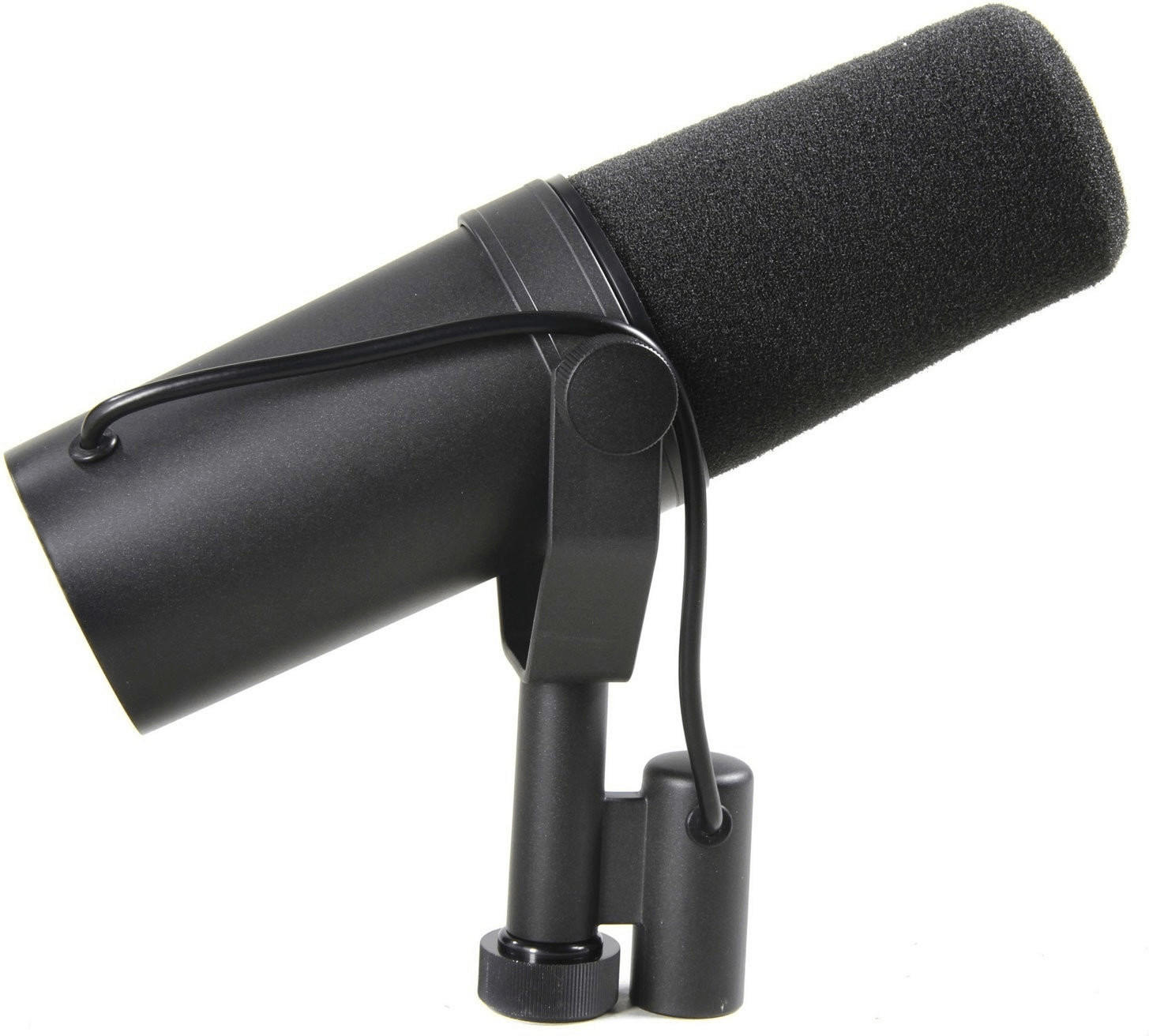

Signal to noise ratio
This ratio measures the level of desired sound compared to the level of background noise present. A higher SNR means the microphone can capture cleaner and clearer audio, while a lower SNR may result in more prominent background noise. For podcasters or those recording in noisy environments, it is crucial to select a microphone with a high SNR to maintain audio quality. A few examples of microphones known for their exceptional signal to noise ratio include the Audio-Technica AT2020, with a SNR of 74dB, and the Rode NT1, boasting an impressive SNR of 82dB. These microphones are particularly suitable for studio recording, voiceovers, and podcasts, ensuring pristine sound with minimal background noise.


Impedance
In simple terms, it refers to the measurement of the resistance a microphone presents to the flow of AC current. Generally, professional microphones have either a high or low impedance. High impedance (also known as Hi-Z or high-Z) microphones are typically affordable and easier to connect to instruments, making them suitable for recording with guitars or other high-impedance sources. Affordable options in this category include the Shure SM58-LC, which offers a frequency response of 50Hz-15kHz and has a suggested load impedance of a minimum 800 ohms. On the other hand, low impedance (also known as Lo-Z or low-Z) microphones are commonly used in professional recording studios and live performances. They provide a clearer and higher quality audio signal with less susceptibility to noise and interference. The Audio-Technica AT2020 Cardioid Condenser Microphone is a popular choice, offering a frequency response of 20Hz-20kHz and an impedance of 100 ohms.


Phantom power requirement
Phantom power is a method used to provide power to condenser microphones, which require an external power source to operate. It is typically supplied through the microphone cable by an audio interface or mixer. When selecting a microphone, it is essential to ensure that it is compatible with the phantom power capabilities of your equipment.
For example, the Audio-Technica AT2020 is a popular condenser microphone that requires 48V phantom power. This versatile microphone offers a wide dynamic range and high SPL handling, making it suitable for various recording applications. Another option is the Rode NT1, which also requires 48V phantom power. The NT1 boasts a very low self-noise level, making it ideal for capturing clear and accurate recordings.


In terms of product groups, it is worth mentioning that most condenser microphones, including those used for vocals, instruments, or studio recordings, typically require phantom power. However, there are also dynamic microphones that do not need phantom power, such as the Shure SM58, a well-known microphone among live performers and broadcasters. Overall, being aware of the specific phantom power requirements of a microphone is crucial to ensure seamless compatibility with your audio setup.
Connection type (wired/wireless)
Wired microphones offer a direct connection to the audio source, providing a reliable and uninterrupted signal transmission. They are often preferred for professional studio recordings or live performances where audio quality is crucial. Some popular wired microphone options include the Shure SM58, known for its durability and clarity, the Audio-Technica AT2020, renowned for its extended frequency response, and the Sennheiser e835, praised for its excellent vocal reproduction.
On the other hand, wireless microphones provide more freedom of movement, making them suitable for presentations, stage performances, or situations where mobility is required. These microphones utilize radio frequencies to transmit the audio signal to a receiver, eliminating the need for physical cables. Notable wireless microphone options include the Shure BLX288/PG58, featuring a rugged construction and easy setup, the Sennheiser EW 100 G4, with adaptive diversity technology for enhanced reception reliability, and the Audio-Technica ATW-1102, known for its clear, natural sound reproduction.


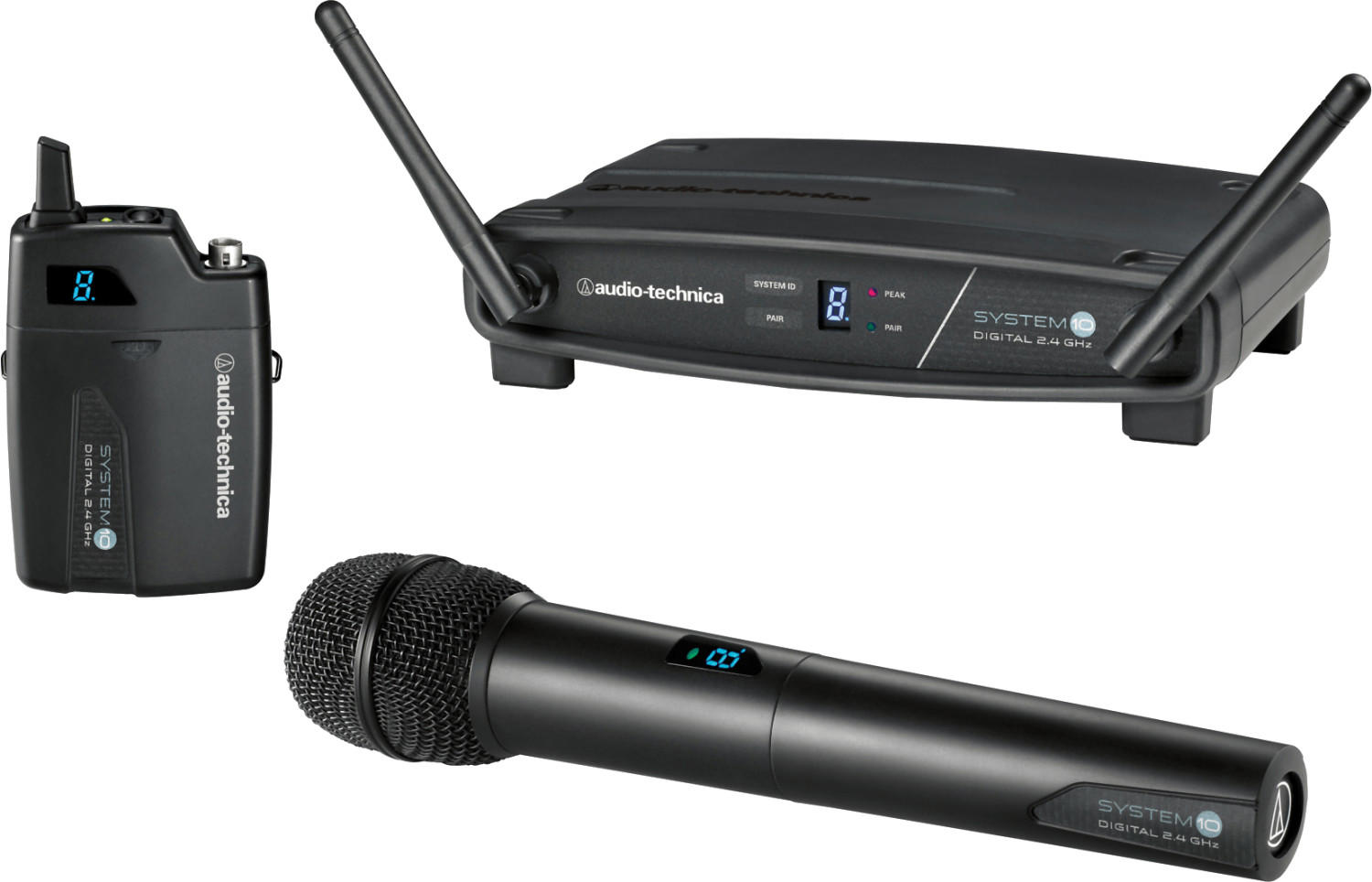
It is important to note that both wired and wireless microphones can greatly vary in terms of quality, durability, and price range. Smaller dynamic microphones are often preferred for video recordings due to their compact design and easy-to-use features, such as the Rode VideoMicro and the Shure MV88+. Additionally, condenser microphones, known for their sensitivity and detailed sound capturing abilities, are widely utilized in studio environments, with options like the Neumann TLM 103 or the AKG C414 XLII being popular choices among professionals.




Internal pop filter
This feature helps to reduce unwanted plosive sounds, such as "P" and "B" sounds, which can cause distortion in recordings. An internal pop filter helps to prevent these sounds from directly hitting the microphone capsule, ensuring clearer and cleaner audio.
One example of a microphone with a built-in internal pop filter is the Audio-Technica AT2020. It features a specifically designed low-mass diaphragm that provides extended frequency response and superior transient response. The internal pop filter allows for recording vocals and close-miking at an even distance, while reducing the occurrence of plosive sounds. Another option is the Rode NT1, which includes a pop shield that integrates with the microphone construction, effectively minimizing plosives for smooth and professional-sounding recordings. Both microphones excel in providing high-quality audio and eliminating disruptive plosive sounds.


Shock mount
A shock mount is a suspension mechanism designed to absorb vibrations and unwanted handling noise, providing clear and professional sound quality. The Rode PSM1 Shock Mount is a popular choice, compatible with Rode microphones such as the Rode NT1 and NT1-A. It features a 4-point suspension system to minimize mechanical vibrations. Another option is the Neumann EA 1 Elastic Suspension Mount which is designed specifically for Neumann microphones like the Neumann TLM 102 and TLM 103. This shock mount utilizes an elastic suspension system to isolate the microphone from vibrations and shocks. Lastly, the Audio-Technica AT8458 Elastic Shock Mount is a versatile option that can fit most cylindrical microphones, including the Audio-Technica AT2020 and AT2035. It features an adjustable angle with a locking mechanism to secure the microphone position.
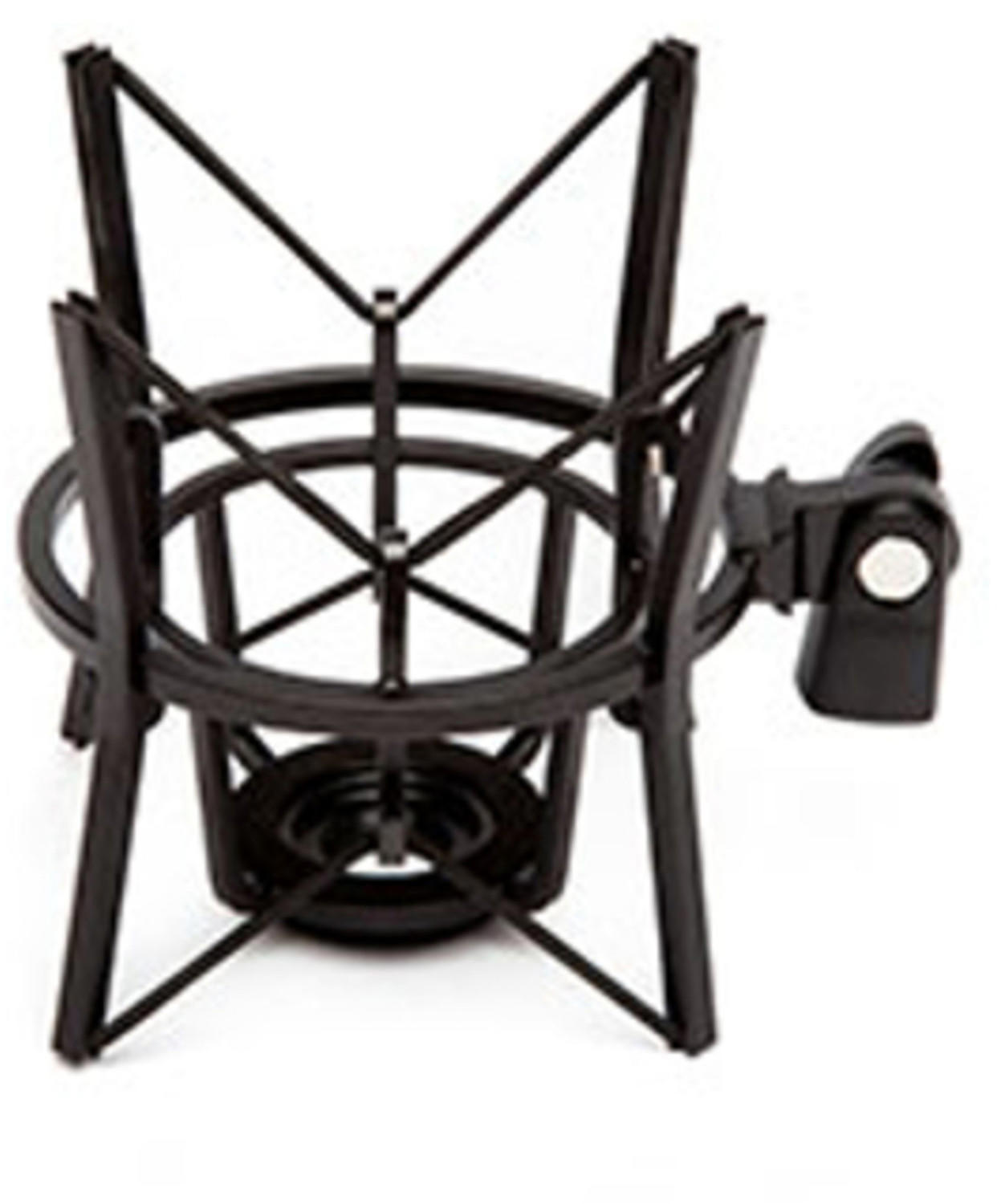
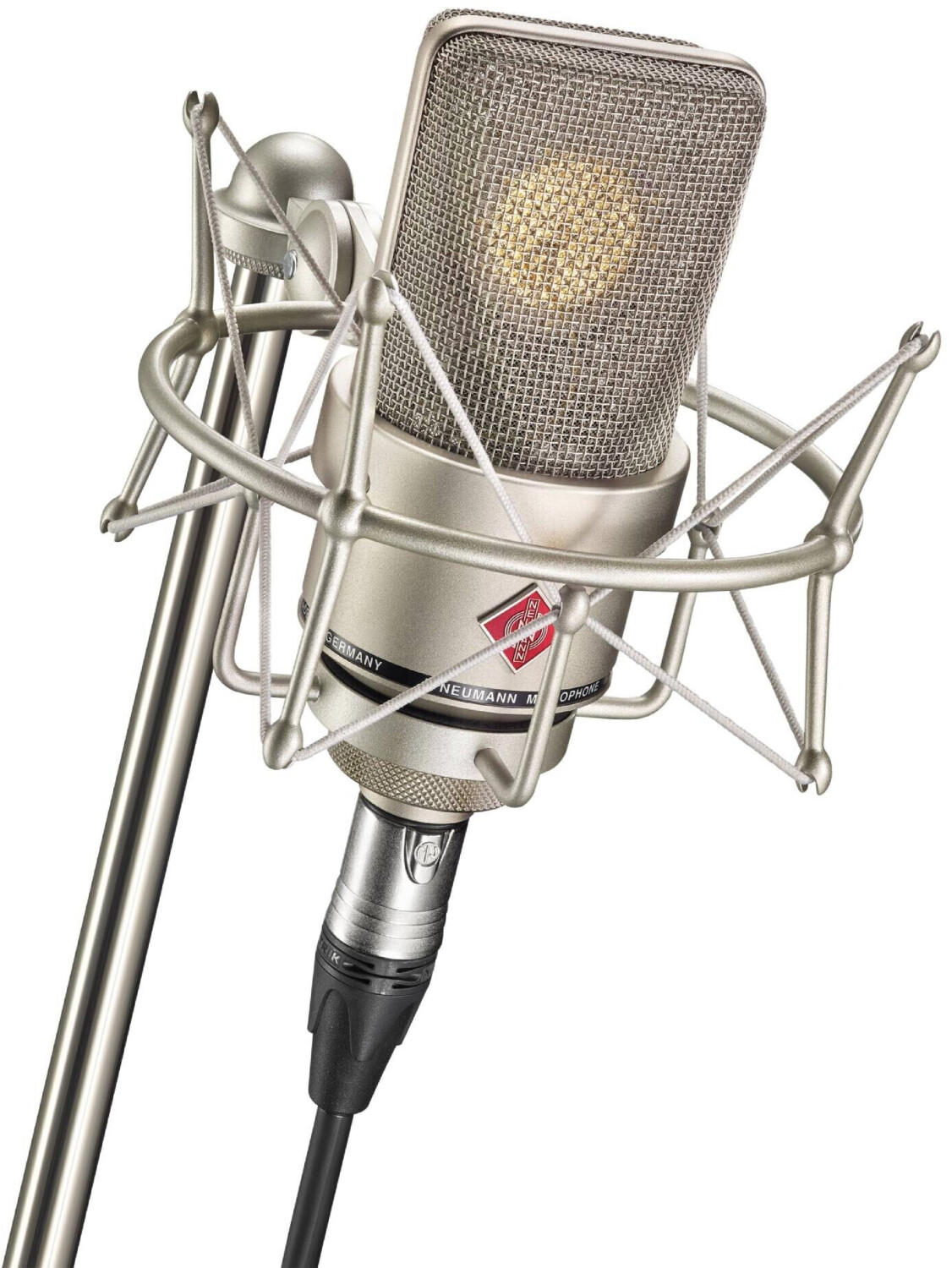
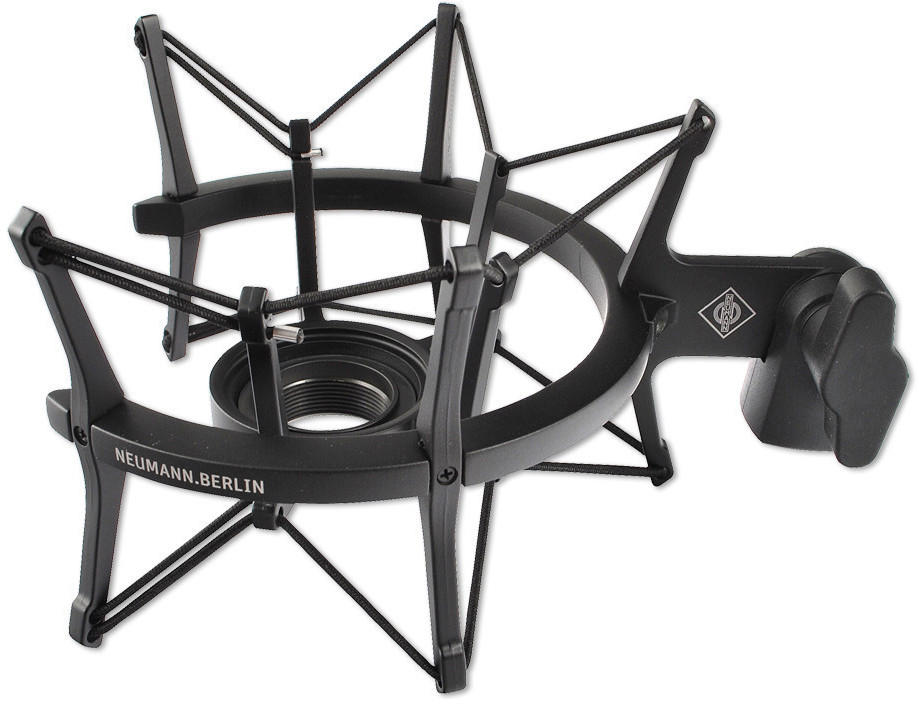

Windscreen
Windcreens are designed to reduce unwanted wind and breath noise interference that can significantly degrade recordings. There are different types of windshields available, including foam windshields and fur windshields. Foam windshields, such as the Rode WS6 and Shure A58WS-BLK, are suitable for indoor or gentle outdoor use as they provide a basic level of protection against wind noise. If you need greater wind noise reduction for outdoor recording, fur windscreens like the Rode Dead Cat and Giant Squid Furry Windscreen are more effective. Fur windshields utilize artificial fur to dissipate wind and provide clearer, crisper audio even in harsh conditions.
Built-in headphone monitoring
This feature allows you to listen to the audio in real-time, ensuring the quality and clarity of your recordings. If you are a content creator or musician who prefers to monitor your audio directly from the microphone, there are a few great options available. The Shure MV7 USB Podcast Microphone offers built-in headphone monitoring with volume control, providing a low-latency headphone output for real-time monitoring. Another option is the Rode NT-USB Mini USB Microphone, which also includes a 3.5mm headphone jack for direct monitoring. With these microphones, you can confidently monitor your audio as you record, making it easy to adjust your technique or settings on the fly.
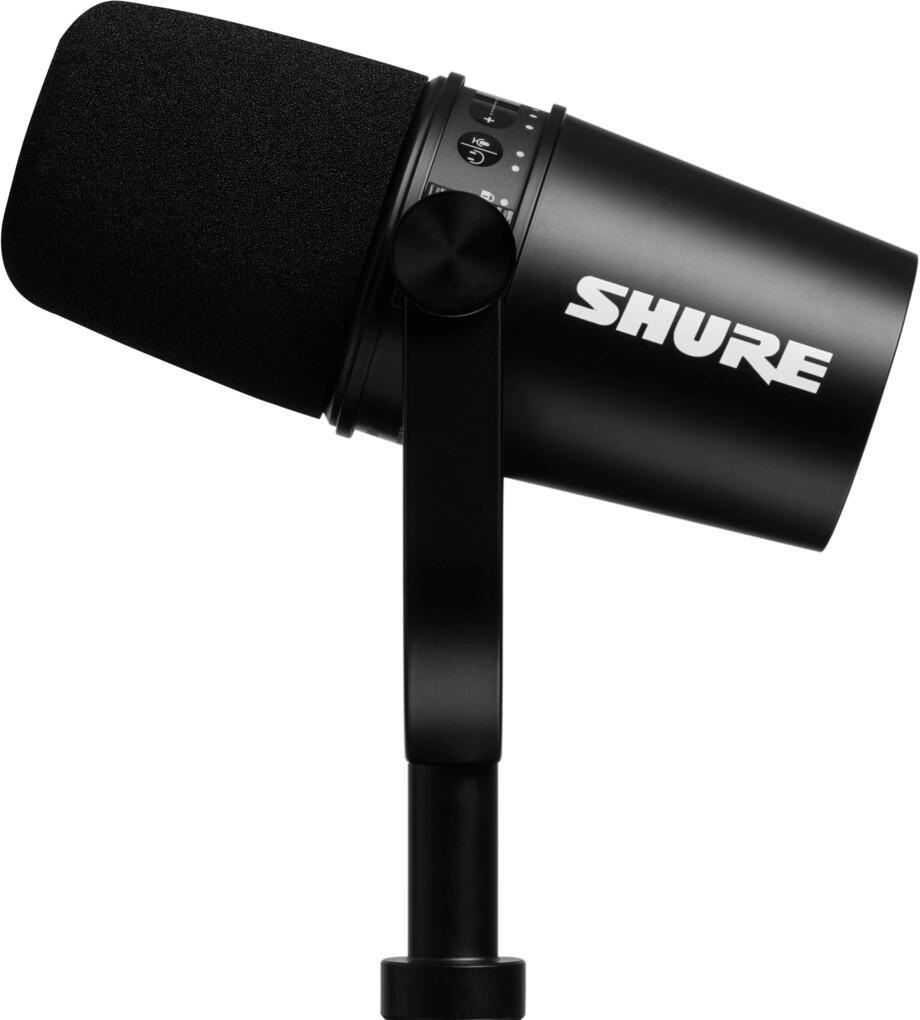
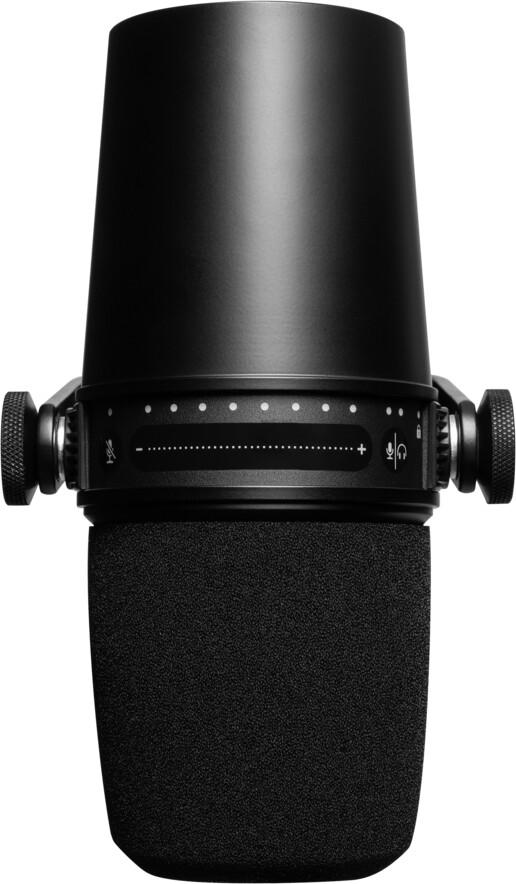
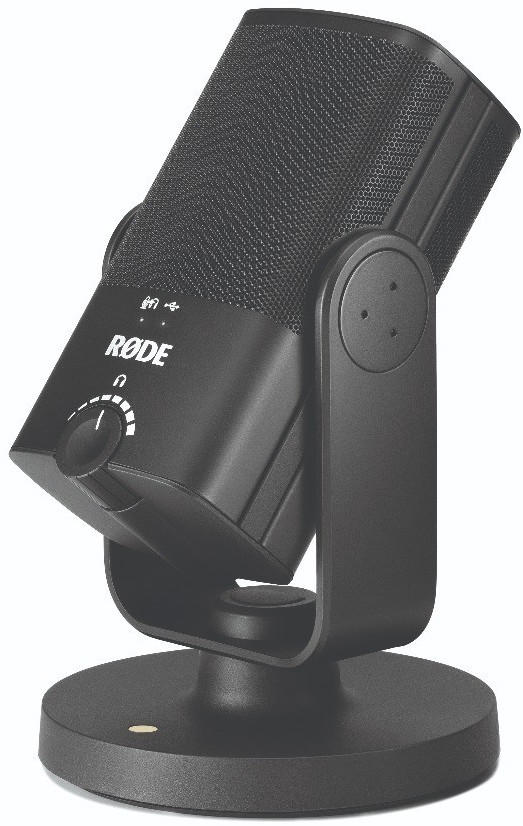
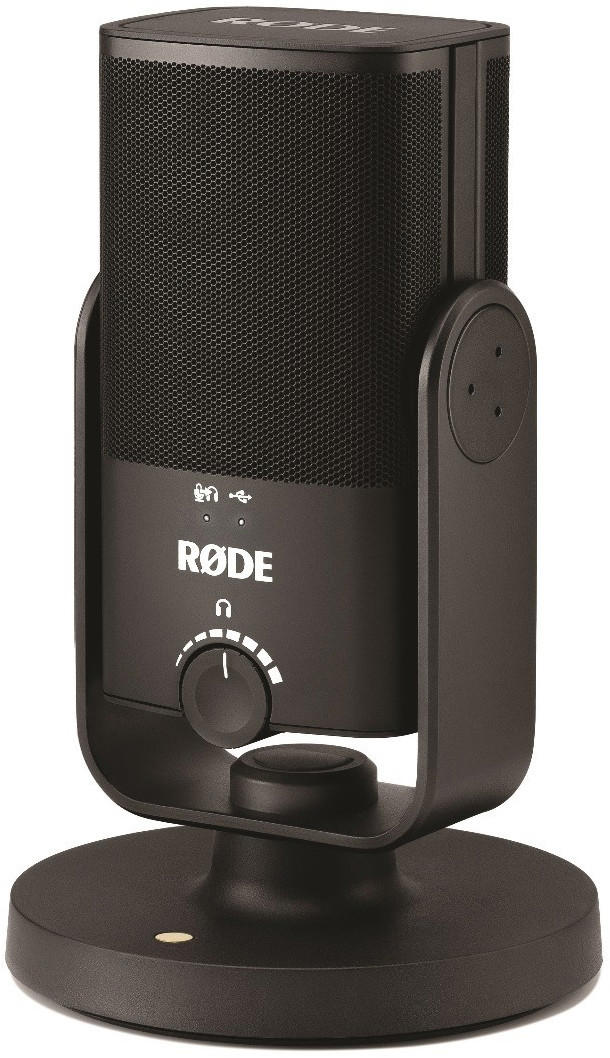
Size and weight
The size and weight of a microphone can greatly affect its portability and ease of use. If you are looking for a microphone that is lightweight and compact, the Shure SM58-LC Cardioid Vocal Microphone is a great choice. With a weight of just 298 grams and a length of 10 inches, this microphone is highly portable and easy to handle during performances or recording sessions. Another option to consider is the Rode VideoMic Pro+ Compact Directional On-Camera Shotgun Condenser Microphone, designed specifically for video recording. Despite its high-quality audio capture capabilities, this microphone weighs only 122 grams and has a compact size that is suitable for on-the-go videography. However, if you require a larger microphone for professional studio use, the Neumann TLM 102 Condenser Microphone offers exceptional audio quality and weighs 210 grams, making it a reliable and manageable option for long sessions. Overall, considering the size and weight of a microphone is crucial in finding a device that fits your specific needs and intended use.



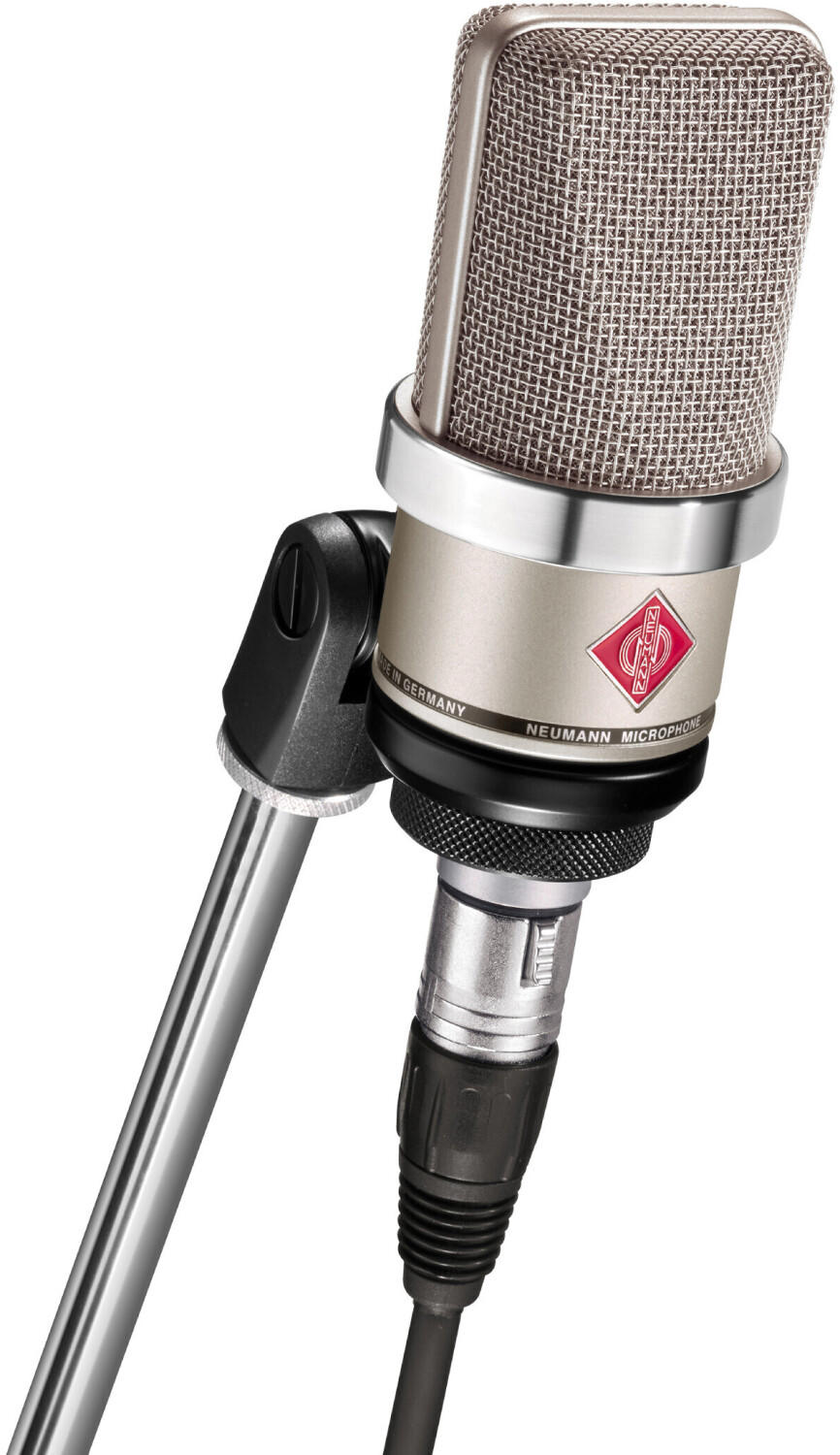
Durability
Look for microphones that are built with rugged construction and materials that can withstand the rigors of regular use. "The Shure SM58" will impress you with its legendary durability. It features a steel mesh grille that protects the microphone element and resists wear and denting. Another great option is the "Audio-Technica AT2020," known for its robust build and solid construction. With a heavy-duty metal body and a pivoting stand mount, it guarantees long-lasting performance even in demanding environments. Both options are commonly used in stage performances and come highly recommended for their durability.


Stage vs. studio use
Stage microphones are designed to withstand the rigors of live performances with their durable construction and ability to handle high sound pressure levels. They are typically designed to have a cardioid polar pattern that allows for focused sound capture, minimizing background noise and feedback. An example of a stage microphone is the Shure SM58, known for its ruggedness and reliability on stage. For studio use, on the other hand, microphones are designed to capture a more detailed and nuanced sound. They often have a wider frequency response range and a more sensitive pickup pattern for accurate studio recording. An example of a studio microphone is the AKG C414, which offers a wide dynamic range, selectable polar patterns, and advanced technical specifications suitable for capturing studio-quality sound.
Audio quality
The best microphones will deliver clear and accurate sound reproduction, capturing vocals and instruments with fidelity. Some top microphone options that excel in audio quality are the Shure SM58, Audio-Technica AT2020, and Neumann U87. The Shure SM58 is known for its robust build and balanced frequency response, capturing vocals exceptionally well. The Audio-Technica AT2020 offers a wide dynamic range and a cardioid polar pattern for outstanding sound isolation. The Neumann U87 is a highly regarded studio microphone with a smooth frequency response, excellent sensitivity, and low self-noise, providing pristine audio recordings. These microphones ensure professional-quality sound reproduction, making them perfect for various recording and live performance applications.

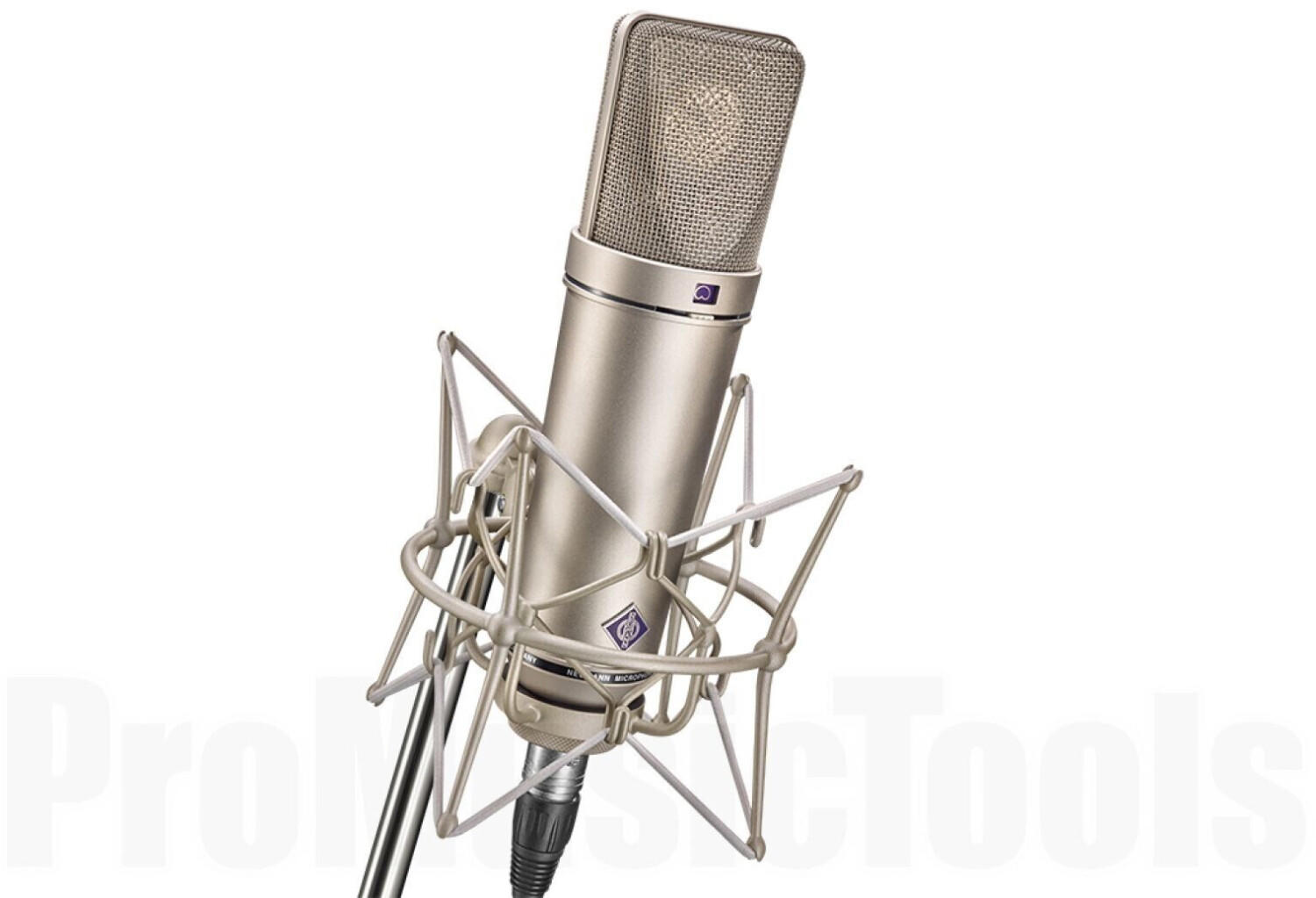
Design and aesthetics
This includes the overall shape, color, and materials used in the microphone's construction. Different microphones offer varying designs to cater to different preferences and purposes.
For those who prioritize a sleek and modern design, the Audio-Technica AT2020 is an excellent choice. It features a contemporary matte black finish with a sturdy construction that gives it both durability and a professional look.
On the other hand, if vintage aesthetics are your preference, mics like the Neumann U 87 or the Shure SM7B fit the bill. The U 87 boasts a timeless design with a large nickel grille and a classic Neumann logo. It exudes a sense of elegance and tradition, while its high-quality components ensure exceptional sound reproduction. The SM7B, often associated with broadcast studios, features a charm of its own with its sleek black design and snugfoam windshield.



Ultimately, the choice of design and aesthetics will largely depend on personal preference and the intended use of the microphone.
Compatibility with different devices (computers, smartphones, cameras)
Compatibility ensures that the microphone can effortlessly connect to the device and function as intended. For computers, USB microphones are a popular choice, as they directly plug into the computer's USB port. Some notable USB microphones worth considering are the Blue Yeti USB Microphone, which offers multi-functionality and high-quality audio recording, and the Audio-Technica ATR2100x-USB Cardioid Dynamic USB/XLR Microphone, known for its versatility and professional audio quality.
For smartphones, you may want to look for microphones with a lightning or USB-C connector, depending on the type of smartphone you have. The Shure MV88 Digital Stereo Condenser Microphone is an excellent option as it features a lightning connector and an applicaISBN digital stereo condenser microphone https://www.shure.com/en-US/products/microphones/mv88 plus_mk_frequency_range_more dependable audio recording. Another option is the Rode VideoMicro Compact On-Camera Microphone, which offers a 3.5mm TRS cable that plugs into the smartphone's headphone jack for easy connectivity.
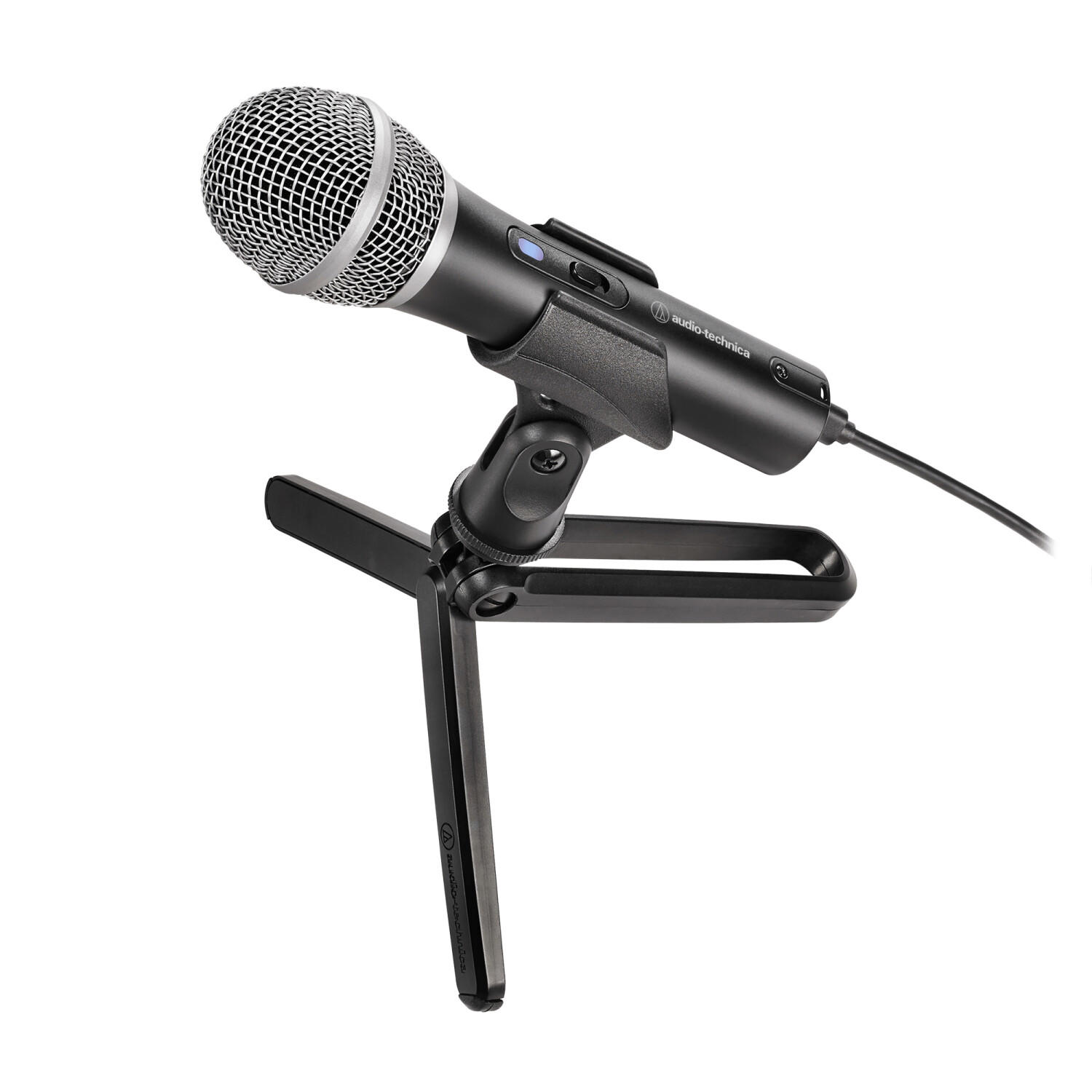


If you plan to use the microphone with a camera, it's crucial to consider microphones with hot shoe mounts or compatibility with camera accessories, such as the Rode VideoMic Pro+ Compact Directional On-Camera Microphone, which has a shock-mount and a 3.5mm TRS output for connecting to the camera. Alternatively, the Audio-Technica AT875R Line + Gradient Condenser Microphone is a popular shotgun microphone with an XLR connector, suitable for connecting to professional cameras or audio recorders.
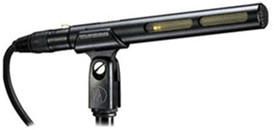
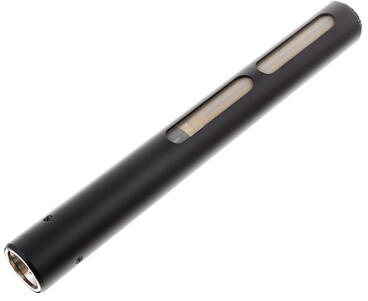
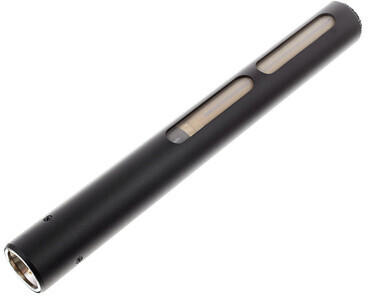
Mounting options (stand, boom arm)
Mounting options for microphones include stands and boom arms, each with their own advantages. Stands are popular for their stability and versatility, allowing microphones to be securely placed on a desk or floor. The Rode PSA1 Swivel Mount Studio Microphone Boom Arm is a top choice in this category, featuring a 360-degree rotation and a sturdy C-clamp for firm attachment. For boom arm options, the Heil PL-2T Overhead Broadcast Boom stands out, offering a professional broadcast-quality solution ideal for podcasting and voiceover work. It features a built-in channel cable management system to keep the setup neat and organized. Another notable product in this segment is the Yellowtec m!ka M!ss01 MKII Microphone Desk Arm, which boasts a linear, balanced design and high-quality construction that minimizes vibrations and ensures optimum sound output.
Portability
One remarkable option is the Shure SM58, a handheld dynamic microphone that is widely recognized for its durability and high-quality sound reproduction. Its portable design makes it ideal for musicians, performers, and presenters who need a reliable microphone that they can easily transport to different venues. Another noteworthy choice is the Rode VideoMic Pro+, a compact shotgun microphone specifically designed for videographers and content creators. Its lightweight construction and integrated shock mounting system allow for effortless portability, making it a fantastic option for capturing professional-grade audio in various outdoor and indoor shooting situations.
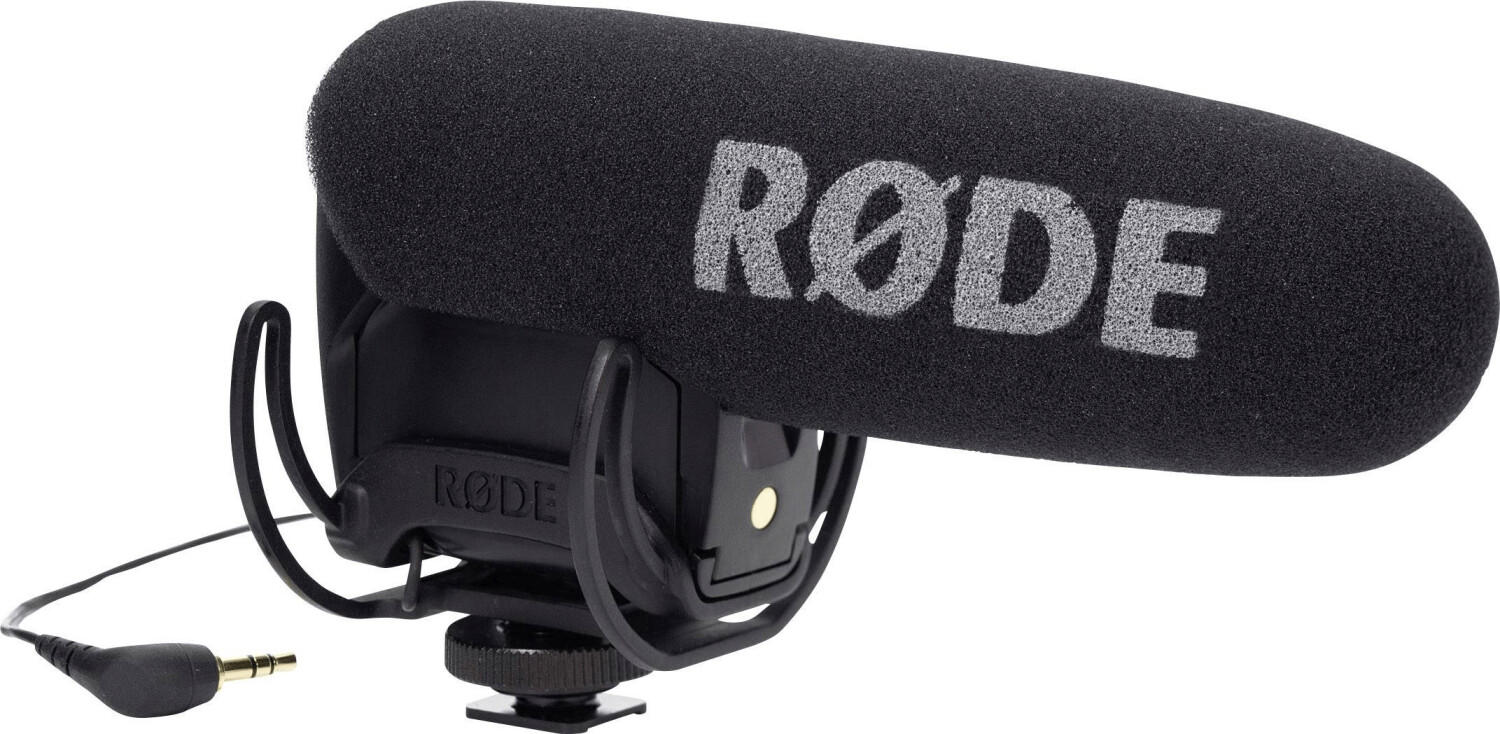
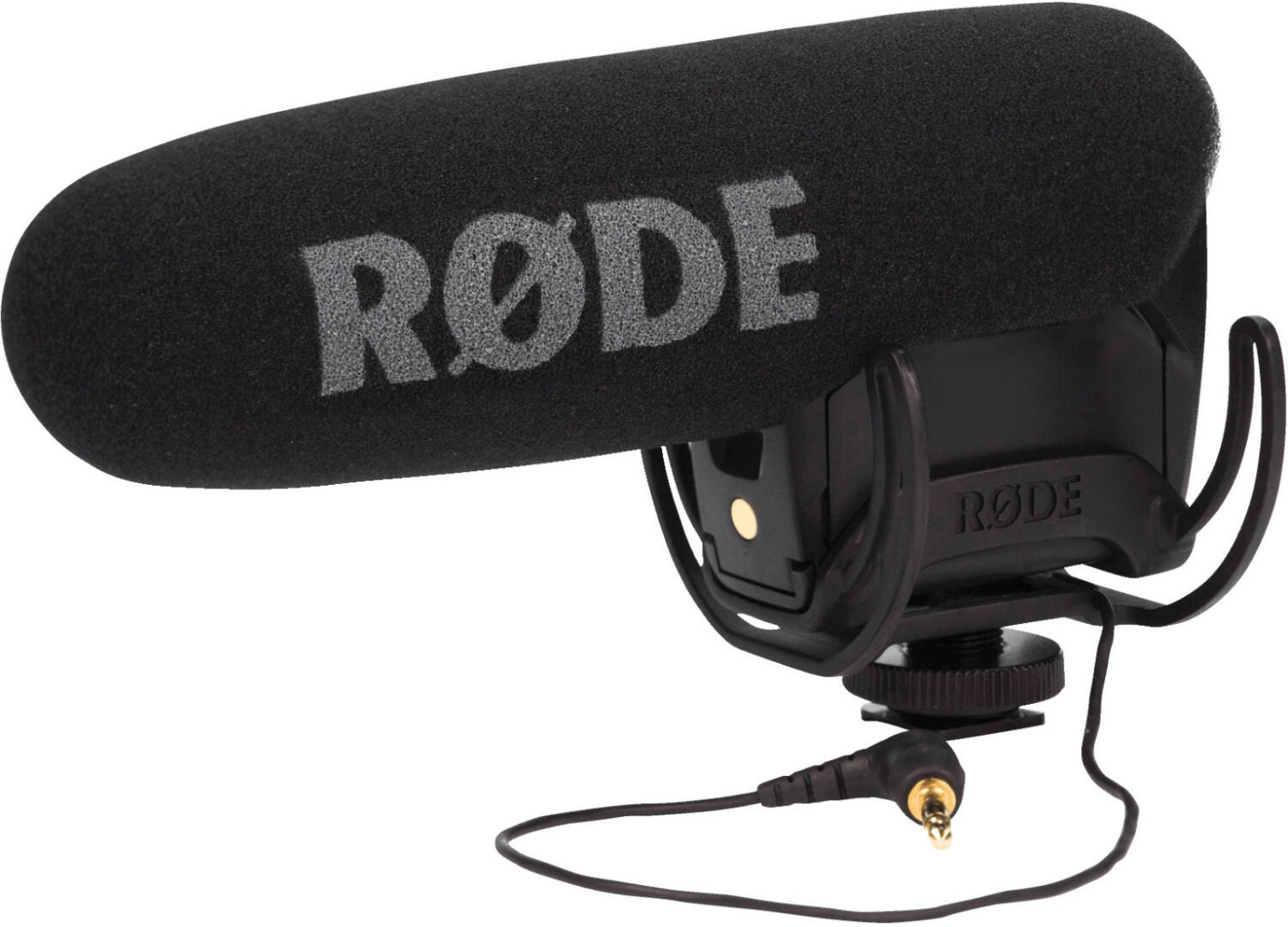
Power source (battery, USB)
There are two main options to choose from, battery-powered and USB-powered microphones. Battery-powered microphones provide portability and are perfect for on-the-go recordings or outdoor use. One excellent example of a battery-powered microphone is the Rode NTG2 Shotgun Microphone. It operates on a single 1.5V AA battery, providing up to 400 hours of use. Another option to consider is USB-powered microphones, which are a convenient choice for those working in a studio or stationary setup. These microphones draw power directly from your computer via the USB connection, eliminating the need for external batteries. The Audio-Technica ATR2500X-USB Cardioid Condenser Microphone is a notable USB-powered microphone that offers high-fidelity sound reproduction and multiple polar patterns for versatile recording options. Remember, the choice between battery-powered or USB-powered microphones depends on your specific requirements and intended use.


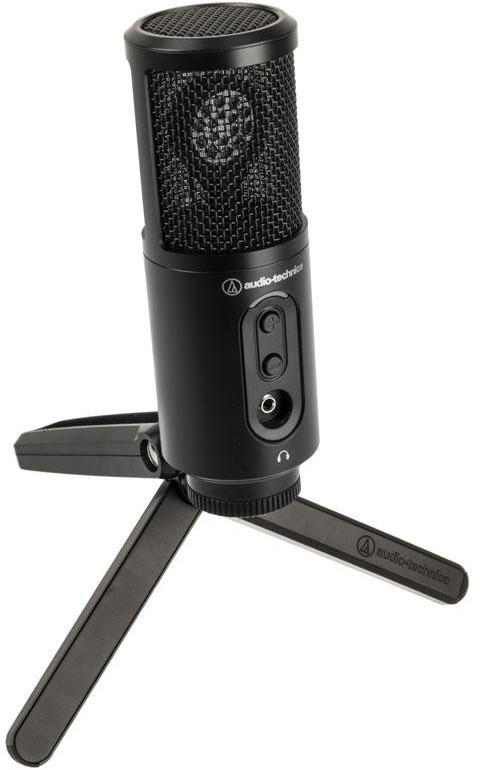
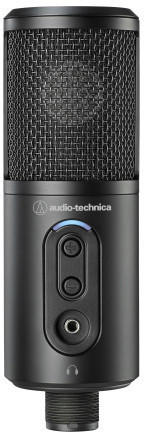
Adjustable gain control
This feature allows you to easily adjust the input level of the microphone to optimize performance in different recording situations. A microphone with adjustable gain control enables you to amplify or reduce the signal level, making it ideal for capturing audio in a variety of environments.
One great option that offers adjustable gain control is the Audio-Technica AT2020USB+. This microphone features a built-in headphone jack with volume control that allows for direct monitoring, making it convenient for live tracking. With a frequency response of 20Hz to 20kHz, cardioid polar pattern, and a maximum SPL of 144dB, the AT2020USB+ is suitable for a range of applications, from vocals to podcasting.
Another notable microphone is the Rode NT1, which also includes adjustable gain control. The NT1 boasts an enormous dynamic range, low self-noise level of just 4.5dBA, and a frequency response of 20Hz to 20kHz. Additionally, it comes with the AI-1 Audio Interface, providing a complete recording solution. With its transparent sound reproduction and versatile gain control, the Rode NT1 is a top choice for discerning recording enthusiasts.
These examples offer a glimpse into the microphone market, showcasing the adjustable gain control feature in two different models.
Directivity control
Directivity control refers to the ability of a microphone to focus on specific sounds or reject unwanted noise from other directions. There are different types of directivity patterns, including omnidirectional, cardioid, bidirectional (figure-8), and shotgun.
For applications requiring a wide pickup range, an omnidirectional microphone is ideal. One example is the Audio-Technica AT2020, which features a fixed-charge back plate, designed for maximum sensitivity and wide frequency response. On the other hand, if you need a microphone with a focused pickup pattern, a cardioid microphone like the Shure SM58 would be a great choice. The SM58 is a dynamic microphone that is widely recognized for its durability, crisp sound, and effective feedback rejection.
For situations that require capturing sound from both directions, a bidirectional (figure-8) microphone is suitable. The Audio-Technica AT2020USB+ is a USB condenser microphone with a high-quality A/D converter, providing a seamless digital recording experience for interviews, podcasts, and vocal performances.

Lastly, for applications that call for precise audio targeting and rejection of ambient noise, a shotgun microphone is recommended. The Rode NTG3 is a professional shotgun microphone that excels in outdoor recording scenarios, featuring low self-noise and highly directional polar patterns for enhanced focus on the subject.
Background noise suppression
This feature is particularly crucial for users who intend to use the microphone in noisy environments such as live events or crowded spaces. A great example of a microphone that excels in background noise suppression is the Shure SM58. With its cardioid polar pattern and frequency response tailored for vocals, this microphone effectively captures the desired sound while minimizing background noise. Additionally, the Audio-Technica AT2035 is another excellent option. This cardioid condenser microphone offers a high SPL handling and a wide dynamic range, which results in exceptional background noise rejection.
Audio monitoring capabilities
This refers to the microphone's ability to provide accurate sound monitoring and feedback in real time. An excellent example of a microphone with exceptional audio monitoring capabilities is the Shure SM58. This microphone offers a tailored vocal response and eliminates feedback, making it a popular choice for live performances and studio recordings. Another great option is the Audio-Technica AT2020, which features a low-mass diaphragm and extended frequency response, allowing for superb sound reproduction and monitoring. For professionals in need of a high-end option, the Neumann U87 delivers outstanding audio monitoring capabilities with its wide dynamic range, precise sound reproduction, and excellent off-axis rejection. It is commonly used in broadcast studios and professional recording environments.


Interchangeable capsule system
The Interchangeable capsule system is a feature that allows the user to easily switch and replace microphone capsules to adapt to different recording scenarios. This system provides flexibility, as it allows users to have one microphone body and multiple interchangeable capsules that each offer different characteristics. This can be especially useful in professional recording studios or for users who require versatility in their microphone setup.
One particular product that offers an Interchangeable capsule system is the Audio-Technica AT4053B. This microphone features a modular design, allowing users to swap the capsules on the go. The AT4053B offers impressive specifications, with a frequency response range of 20Hz to 20kHz and a dynamic range of 128dB. Another great option is the AKG C 414 XLS which boasts a range of interchangeable capsules, including omnidirectional, cardioid, and figure-of-eight patterns. The C 414 XLS also features a wide frequency range of 20Hz to 20kHz and a selectable 9dB attenuation pad, making it suitable for a wide range of recording applications.
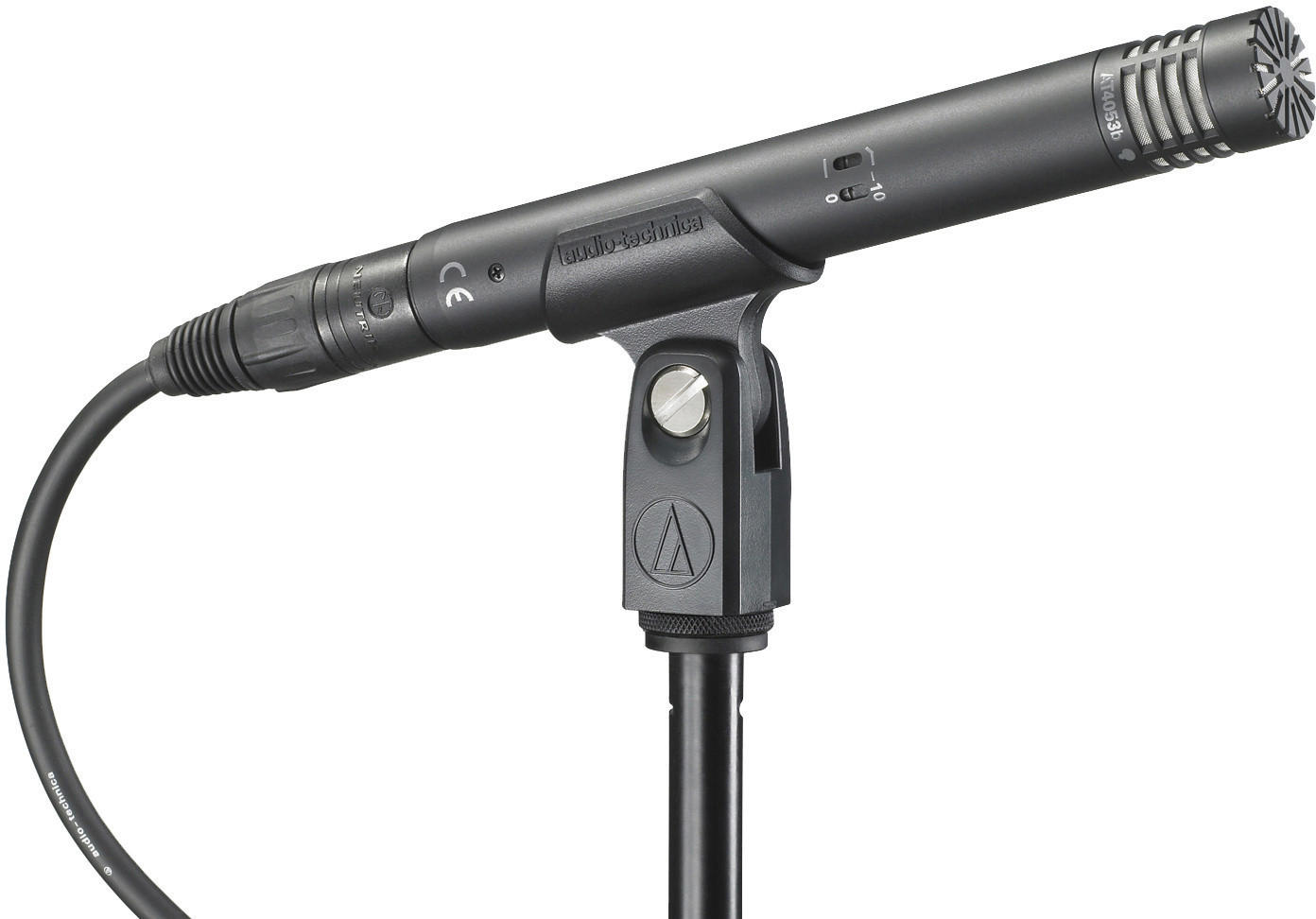
Onboard controls/instrument-specific features
Some microphones offer built-in controls that allow you to adjust settings such as gain, polar pattern, or filtering directly on the microphone itself. This convenience can save you time and effort in adjusting the microphone to the specific needs of your recording or performing situation.
For example, the Shure MV88+ microphone is specifically designed for Apple/iOS devices and offers a variety of onboard controls. It has five predefined DSP modes that you can adjust using the ShurePlus MOTIV app for optimized recording, such as speech, singing, or acoustic instrument settings.
Another example is the Rode NT1 microphone, which includes a high-pass filter and a pad switch directly on the microphone body. The high-pass filter helps reduce low-frequency rumble and handling noise, while the pad switch allows you to attenuate the microphone's sensitivity for recording loud sound sources without distortion.
Several microphone manufacturers offer products with instrument-specific features, catering to specific recording needs. For instance, the AKG C214 and Neumann U87 are popular choices for recording vocals. These microphones are tailored for capturing the nuances and subtleties of vocals, providing superior clarity and sensitivity. On the other hand, the Shure Beta 52A and Audix D6 are frequently used for recording kick drums or bass instruments. They feature extended low-frequency response and tailored frequency curves to accurately capture the deep, impactful sound of these instruments.


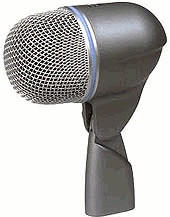
Whether you're looking for onboard controls to fine-tune your microphone's settings or instrument-specific features that enhance recording quality, there are various options available on the market to suit your specific needs.
Live performance vs. recording capability
Microphones designed for live performances are typically built to withstand the rigors of being on stage and provide clear, dynamic sound reproduction. One example of a microphone specifically designed for live performances is the Shure SM58. This cardioid, dynamic microphone is known for its durability and ability to withstand high sound pressure levels, making it a popular choice for vocals on stage.
On the other hand, if you are primarily focused on recording, you may want to consider a microphone that provides precise and detailed audio capture. Condenser microphones are commonly used in recording studios due to their ability to capture a wide frequency range and high sensitivity. The Audio-Technica AT2020 is a popular condenser microphone that offers a wide dynamic range and low self-noise, making it suitable for studio recordings of vocals, acoustic instruments, and more.


Choosing between microphones for live performances and recording capabilities comes down to the specific application and setting. Both the Shure SM58 and Audio-Technica AT2020 exemplify the features and characteristics sought after in their respective domains.


Wireless range/reliability
The wireless range refers to the maximum distance over which the microphone can transmit audio without interference. It is crucial to select a microphone with a reliable wireless connection to ensure uninterrupted performance. Some excellent options to consider are the Shure BLX24/PG58 Wireless Microphone System, which offers a wireless range of up to 300 feet, and the Audio-Technica ATW-1102 Wireless Microphone System, known for its solid reception and range of up to 100 feet. Additionally, the Sennheiser EW 135P G3 Handheld Wireless Microphone System is highly regarded for its reliable transmission with a range of up to 490 feet. Overall, carefully assessing the wireless range and reliability will help you determine the best wireless microphone for your needs.
Ease of setup and use
Many microphones on the market are designed specifically to offer simple and hassle-free installation and operation. A good example is the Blue Yeti USB Microphone, which is widely praised for its plug-and-play functionality. It features a 3-capsule array for excellent sound quality and comes with a desktop stand for easy placement. Another option to consider is the Audio-Technica ATR2100x-USB Microphone, which is a versatile handheld dynamic microphone that can be used with both USB and XLR connections. It provides a user-friendly experience with its built-in headphone jack for direct monitoring and easy volume control. If you are looking for a wireless microphone, the Shure BLX288/PG58 Dual-Channel Wireless System is worth considering. It includes 2 handheld microphones and a receiver, allowing for convenient setup and wireless performance.
Accessories included
Some microphones come with a wide range of accessories that can enhance your recording experience. For example, the Audio-Technica AT2020USB+ is a popular choice among podcasters and YouTubers as it comes with a tripod desk stand, a pivoting stand mount, and a USB cable, allowing for easy setup and use with computers. Another option to consider is the Neumann TLM 102 Studio Set, which not only includes a shock mount but also comes with a handy aluminum carrying case to protect your microphone during transportation. On the other end of the spectrum, if you are looking for a more budget-friendly option, the Rode NT1-A microphone bundle is a great choice as it includes a shock mount, a pop filter, a dust cover, and a 20-foot XLR cable, providing you with all the essentials to get started. It is worth noting that some microphones are sold as standalone units without any accessories, which is something to keep in mind when making your decision.
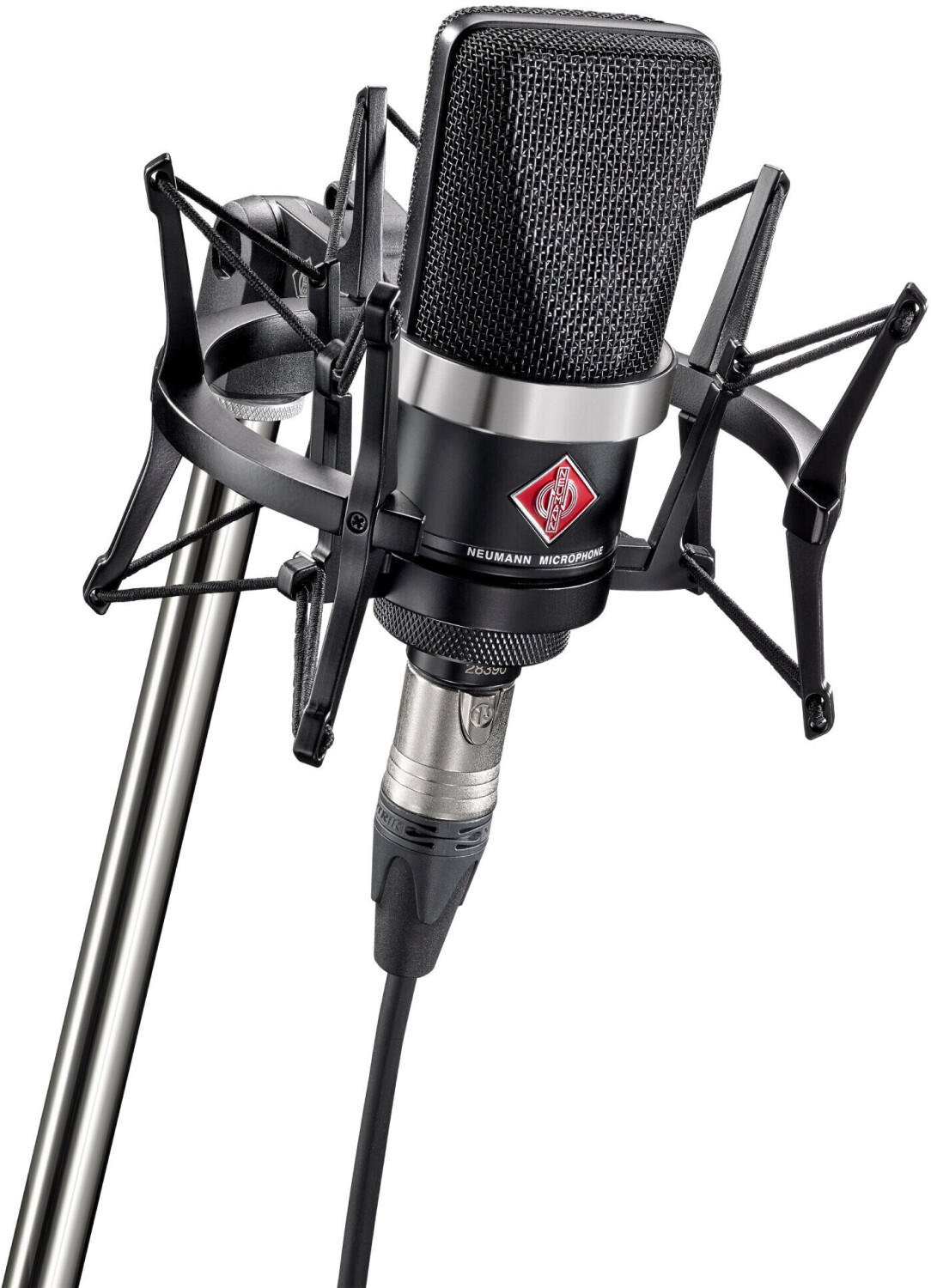

Technical support and customer service
This can make a significant difference in your user experience. Look for companies that provide reliable and responsive support, as well as clear documentation and tutorials to aid in troubleshooting or setup. One example of a brand known for their excellent technical support is Shure. They offer comprehensive customer service options and even have a dedicated support team to assist with any inquiries. Additionally, Audio-Technica is another renowned company known for its exceptional customer service, with a reputation for providing timely and knowledgeable responses. By choosing microphones from these brands, you can have confidence that you will receive the assistance and guidance you may need throughout your microphone usage.
Price
Microphones can range in price from budget-friendly options to high-end professional models. For those on a tight budget, the Audio-Technica ATR2100x-USB is a great choice. Priced under $100, this dynamic microphone offers excellent sound quality and is perfect for podcasting, live streaming, and voiceover work.
For those willing to invest a bit more, the Shure SM58 is a renowned industry-standard microphone that has stood the test of time. It provides quality sound reproduction, rugged construction, and high resistance to electromagnetic hum. Priced around $99, the SM58 is a top pick for live performances and studio recording.
Variety of brands
Different brands offer their own strengths and weaknesses, ensuring that you can find a microphone that is perfectly suited to your needs.
For example, Shure is a well-known and respected brand that offers a wide range of microphones. Their SM58 is a popular choice for live vocal performances, known for its durability and clarity. On the other hand, AKG is another reputable brand known for its high-quality condenser microphones. The AKG C414 XLII, for instance, is a versatile microphone that is capable of capturing various sound sources with stunning accuracy.
Other brands worth considering include Audio-Technica, famed for their AT2020 condenser microphone, which provides excellent clarity for vocal recordings, and Rode, known for their NT1 microphone, which boasts a low noise level, making it ideal for recording delicate vocals. Ultimately, the choice of brand depends on personal preferences, budget, and the specific requirements of the intended use.